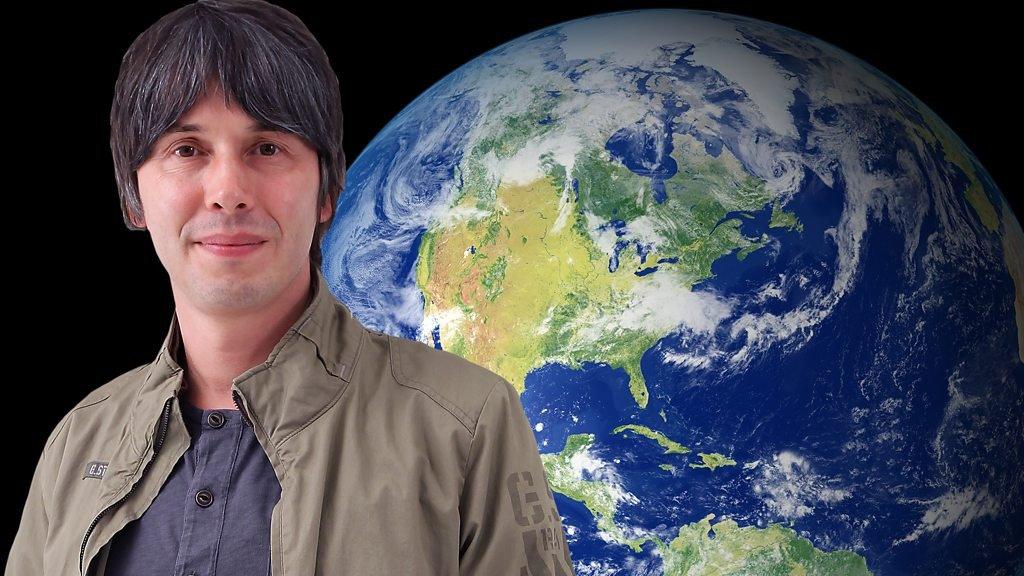Climate change: How bad for the environment is space travel?
- Published
- comments
Watch the test of Nasa's rocket engines
Space travel can help teach us a lot about our solar system, how the Earth was formed and even the future of our planet.
But could the increase in space exploration actually be harming the environment?
This question comes after Nasa successfully tested part of the world's most powerful rocket, called the Space Launch System or 'SLS'.
During the test, the engines on the rocket's core stage were kept running for more than eight minutes - but that meant emitting lots of emissions into the atmosphere.
So how big a deal was it?
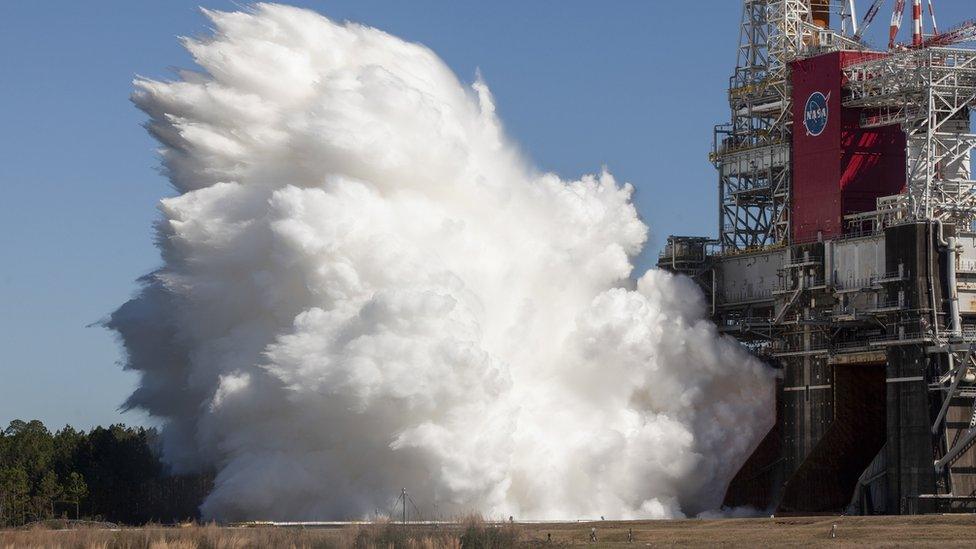
The SLS - the launch system - has four powerful RS-25 engines, and two boosters attached to the sides.
Nothing was launched into the air as the core was attached to a giant structure on the ground, but it was considered successful as things worked as they were expected to.
That test run saw a huge white exhaust cloud fill the air around the SLS, and was so enormous, it was spotted from space by the Goes-16 satellite.
In the most recent SLS test Nasa say that super-cooled liquid hydrogen and liquid oxygen fuel the big engines.
Nasa says that white cloud was made up several emissions but mostly out of water vapour - the greenhouse gas with the greatest impact on climate warming.
However water vapour only remains in the atmosphere for a few days.
How do you make a rocket fly?
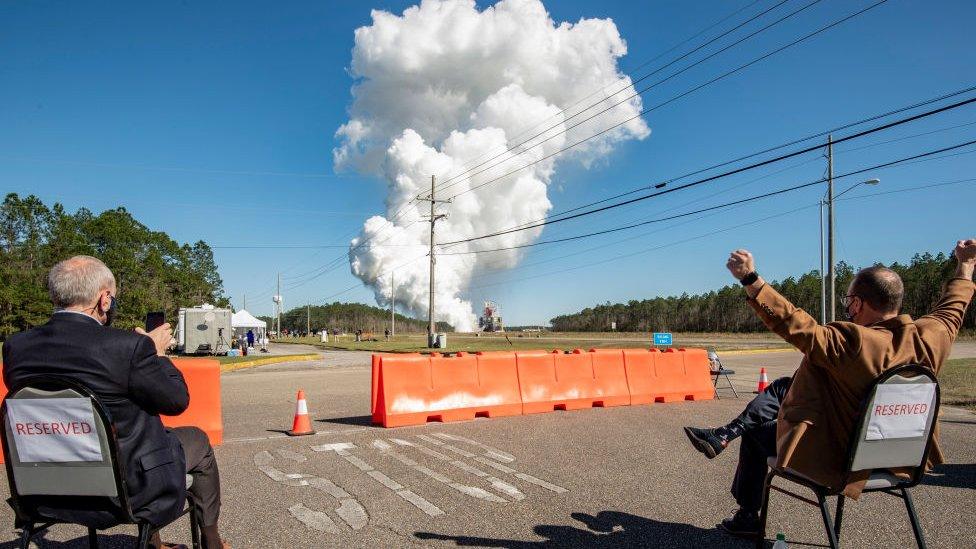
Nasa's Space Launch System rocket undergoes a second hot fire test - but where does the water vapour go?
Space exploration relies on large rockets which need lots of fuel to propel them through the Earth's atmosphere.
In order to get a rocket off the ground, you need to power its engines with fuel, or a propellant.
Historically, rockets have been powered by kerosene but some are now launched by using cleaner methods.
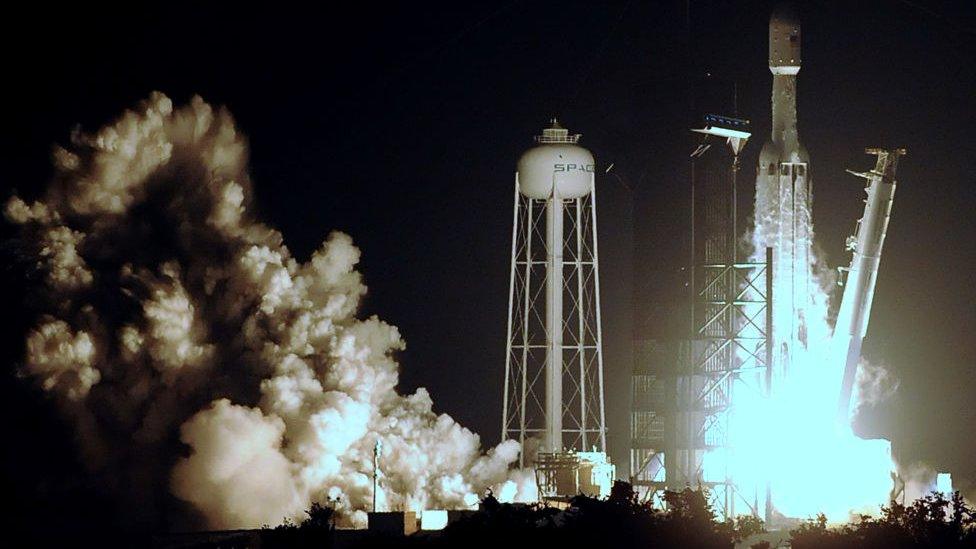
When Space X launched the Falcon Heavy in 2020, it emitted more carbon dioxide (CO2) in a few minutes than an average car would in more than 200 years.
Could greener fuels be the answer?
Hydrogen is a clean fuel, but it has to be produced into a form that is usable for engines or rockets.
And it's that process that is not energy efficient or good for the environment. Almost all of the world's hydrogen is created using fossil fuels like coal or gas.
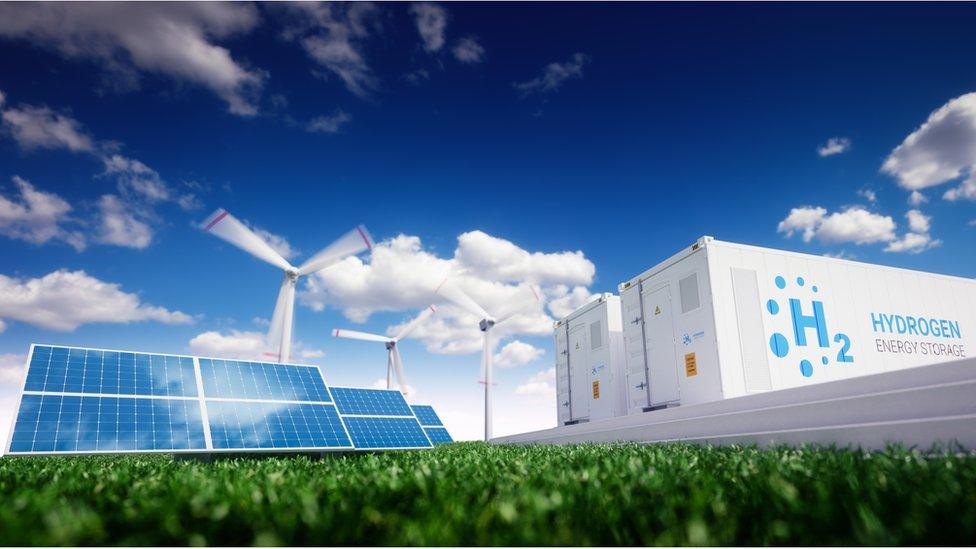
Green hydrogen is made using renewable energy sources like solar and wind power.
So scientists have come up with a cleaner way of creating this fuel. It's called green hydrogen.
It is produced using water electrolysis (using electricity to extract the naturally occurring hydrogen from water) and renewable energy sources, but is very expensive to do.
It currently only accounts for 1 percent of the world's total hydrogen production but is a carbon neutral manufacturing process.
That means it works to remove as much CO2 from the atmosphere as it puts into it.
Aeroplane manufacturers and fuel companies are investing a lot of money into researching green hydrogen in order to try and bring the cost of its manufacture down.
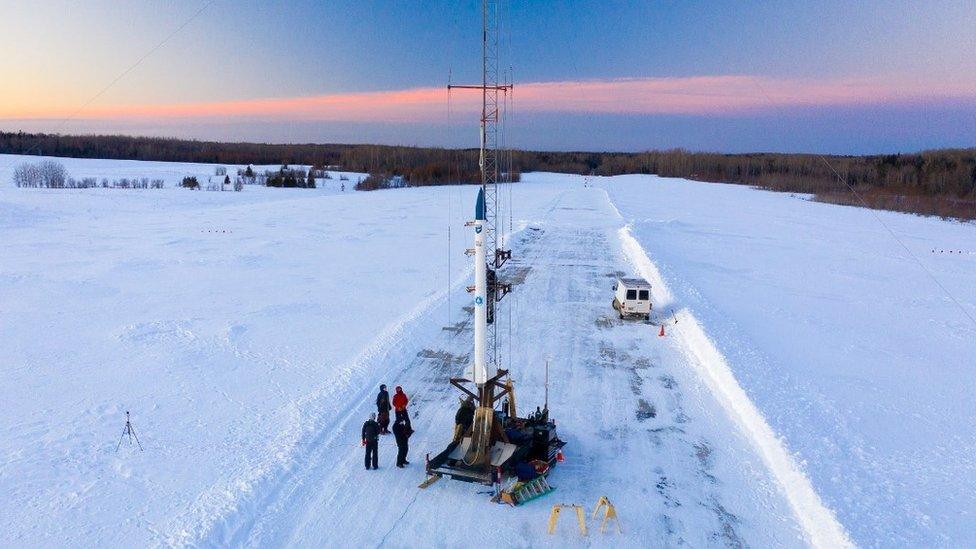
Stardust lifted off and became the first commercial launch of a rocket powered by bio-fuel.
Another option is using bio-fuels to launch rockets.
Bio-fuels are fuels produced from organic material - biomass - including plant materials and animal waste.
One scientist in America, Sascha Deri, has already successfully tested his bio-fuel by launching his own mini rocket in February this year.
However, he is keeping the recipe for his bio fuel a secret, but says the main ingredient can be found from farms around the world!
- Published7 March 2018
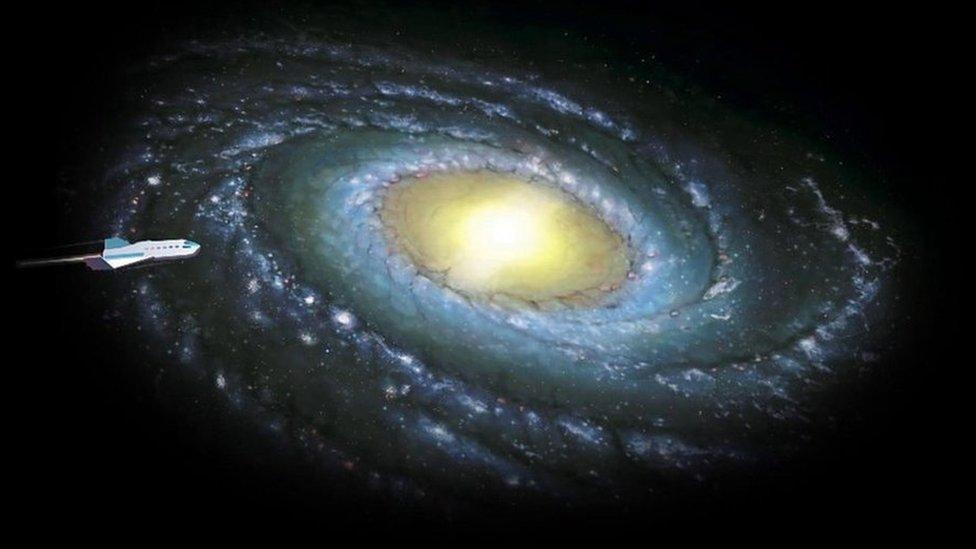
- Published31 July 2019
